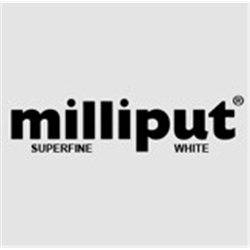A number of model manufacturers produce materials to help modellers scratch-build scene elements to add further...
No products
Product successfully added to your shopping cart
There are 0 items in your cart. There is 1 item in your cart.
Search Tips
Christmas and New Year
Due to public holidays, orders will be next dispatched on Monday 29th.
If you select next day delivery at checkout, please note deliveries are not made on New Year's Day or Sundays.
The shop in Sandown is closed on Saturday 27th December and will reopen on Tuesday 30th December.
Tuesday 30th: 10am to 4.30pm - Wednesday 31st: 10am to 2.30pm - Thursday 1st: closed - Friday onwards: 10am to 4.30pm.
How can I start a diorama?
Starting a diorama is all about planning, gathering the right materials and executing your vision step by step. Here's a guide to get you going:
1. Decide on Your Theme
Think about the scene you want to recreate. Whether it's a historical battle, a peaceful countryside or a fantasy world, having a clear idea of the setting and theme will guide your choices.
2. Choose a Scale
Match the scale of your diorama to the figures or vehicles you'll include. Common scales for dioramas in the UK include:
- 1:72 or 1:76 (good for military scenes and railways)
- 1:35 (popular for vehicles and soldiers)
- 1:48 (ideal for aircraft and figures) Stick with one scale to ensure everything looks proportionate.
3. Gather Materials
You'll need:
- Baseboard: Choose something sturdy, such as plywood or MDF. The size depends on your scene, but leave space for details without overcrowding.
- Modelling Clay/Foam: Perfect for creating terrain, hills or water bodies.
- Paints: Acrylics are often a good choice for dioramas as they dry quickly and offer a wide range of colours.
- Tools: Get basic tools like a hobby knife, brushes, tweezers and cutting mats.
4. Construct the Base
Start by building the landscape. Use foam or clay to shape the terrain, then cover it with modelling putty or plaster for texture. You can also sprinkle sand or static grass to give it a realistic look.
5. Add Figures, Vehicles, and Structures
Carefully paint your figures or vehicles first, then place them in your scene. Consider their positions and how they interact with the environment. If you're adding buildings, trees or other structures, ensure they're proportionate to your figures and vehicles.
6. Detail the Scene
Small details make a huge difference. Think about weathering effects (dirt, rust, wear), scattered debris or tiny accessories that make the scene more dynamic and believable.
7. Lighting and Finishing Touches
Good lighting can bring your diorama to life, especially if you're planning to display it. If you want a more dramatic effect, consider using LEDs or positioning the figures with shadows in mind.
8. Final Assembly
Once everything is painted and placed, glue down your figures, vehicles and accessories. Take your time to ensure everything is positioned correctly and securely.
9. Preserve Your Diorama
Consider using a clear acrylic box to protect your diorama from dust and damage. This will keep it looking fresh for longer.
Starting a diorama can be incredibly rewarding, so enjoy the process and let your creativity flow!
Click here to receive the tips weekly in your mailbox. You can unsubscribe at any time.










